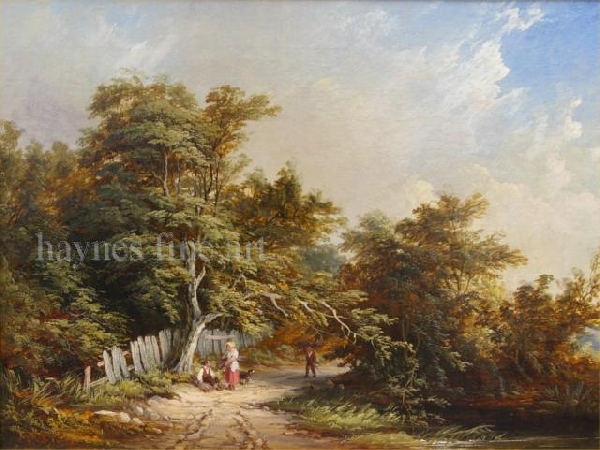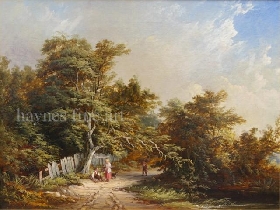Artists Biography
Edward Charles Williams
British 1807 - 1881
He was probably the least privileged of the Williams brothers – the younger sons had the greater advantage of starting their careers in more affluent circumstances.
In the early 1840’s Edward Charles was living in London Street, adjoining Clevedon Street (where Dante Gaberiel Rossetti joined Holman Hunt in 1848 to form the Pre-Raphaelite Brotherhood).
Edward Charles had several addresses in the Tottenham Court Road artists’ quarter, but was the only Williams who never lived in Barnes, which seems to place him slightly outside the family circle, although his move to Buckingham Cottage, Hammersmith, in 1854 was immediately on the other side of the Thames.
His first wife, Mary Ann, died in 1857, and in the following year, his only child, Alice, was born to a pawnbroker’s daughter, who had been a nurse to his invalid wife. The Williams family recalled the woman as both pleasant and capable, but somewhat to the discredit of Edward Charles he did not marry her until some ten years after the birth of their daughter.
It is a characteristic of the personality of Edward Charles that he usually appears in an awkward light – accidentally stepping on a kitten in the Percy household and sternly forbidding his daughter (who died a spinster) to marry the man of her choice.
Edward Charles Williams is the brother most associated with the Williams style and his early work is often confused with that of his father. This is due to their work showing the same woodland style and suggestion of Dutch influence and also because the son sometimes signed his work at “E. Williams” without the second initial. However, there is a superior draughtsmanship in the figures of an E.C. Williams work and during the course of his career, a definite pattern of development can be seen in his work.
William Shayer, a well-known painter of the English village scene, collaborated frequently with Edward Charles Williams and it was these joint paintings that had a marked effect on the individual style of Williams’ work.
In the second half of his career, his landscape scenes had a tendency to recede into a more open, often markedly horizontal composition – a spread of interlocked areas of graduated tone across a wide canvas. He was lightly termed as “Morning Williams” owing to his very frequent use of this time of day. He also painted coastal scenes and drew many of these from Hastings, Sussex and the Isle of Wight.
He both suffered and gained from being the son who was the closest to the shade of Edward Williams. In fact he had more facets to his style, but E. C. Williams has most often been associated with the woodland tradition of his father, and his work in this manner has always held up exceptionally well on the market. His landscapes have an unassuming charm and play a vital role in the pattern of the family work.
Williams remained in Hammersmith for many years. His home, West Lodge, is thought to have been that of J. M. Turner at one time. He died in respectable poverty at 17 Goldhawk Road, Shepherd’s Bush, aged 74 on 25 July 1881.



